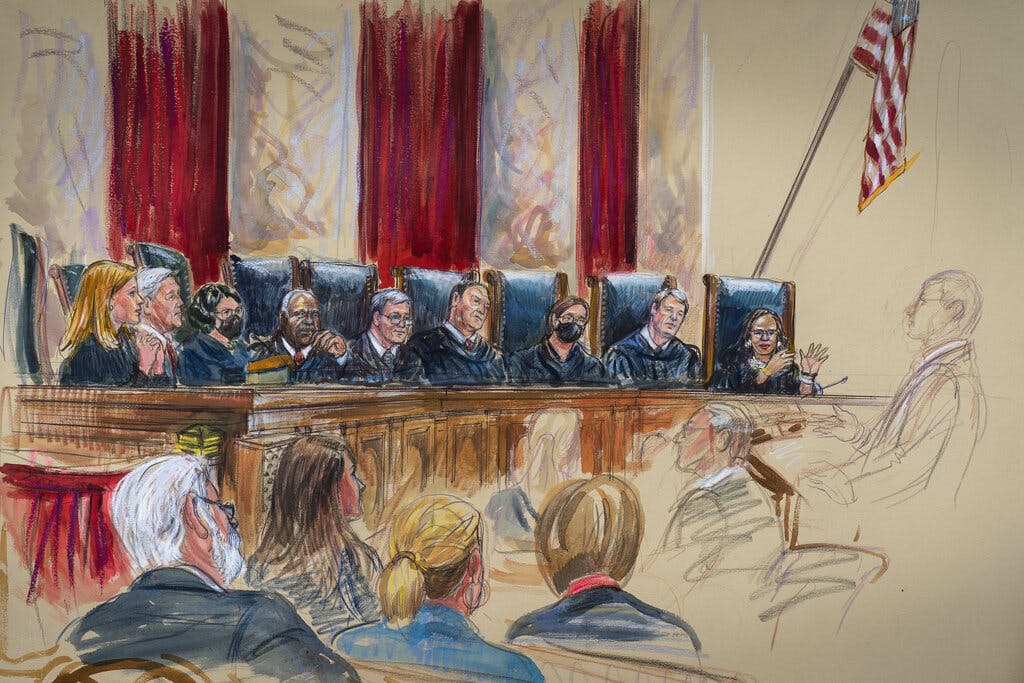Justices Kagan, Alito Split on Recusal, Indicating Wider Supreme Court Ethics Divide
With the chief justice watching, two of the court’s stars pursue different paths on disclosure.

A battle between Justices Elena Kagan and Samuel Alito, as well as between the two wings of the court they can fairly be said to helm, is brewing. You won’t find it, though, in any sweeping majority opinion or stinging dissent. It is not even buried in a ruling’s footnote, where sometimes judicial punches are thrown.
Instead, it is coming into focus in an unlikely source; the list of petitions for certiorari that the court churns out, records that elicit far less fanfare than even the most prosaic of decisions. The justices, though, are staking out two positions that telegraph a wider clash over whether the high court should be subjected to an ethics code.
The first move was made when Justice Kagan recused herself from a death penalty case, Holland v. Florida. The court denied cert, and her recusal was not itself unusual; it was the 133rd this term. Justices Kagan and Alito lead the court in recusals over the last five years. According to Bloomberg Law, justices have recused themselves in 3 percent of petitions since 2018.
What came next, though, was novel. The order notes that “Justice Kagan took no part in the consideration or decision of this petition. See 28 U.S.C. §455(b) (3) and Code of Conduct for U.S. Judges, Canon 3C(1) (e) (prior government employment).” Those are the statutes that govern recusal, the latter of which is binding only on lower court judges.
According to watchdog group Fix The Court, which is pushing for a binding code of ethics, it is “possibly the first time ever, and definitely for the first time in more than 100 years,” that such a decision was appended to an orders list. Justice Kagan previously served as America’s solicitor general under President Obama as well as the dean of Harvard Law School.
Justice Alito, though, failed to make a precedent out of Justice Kagan’s innovation. This week’s lists included the traditional note that the justice “took no part in the consideration or decision” of a petition. BG Gulf Coast and Phillips 66 v. Sabine-Neches Navigation District, also denied cert, turned on whether energy companies had fulfilled their funding obligation for a public waterway.
The answer to why Justice Alito recused himself can likely be found in his 2021 financial disclosures that show a holding of between $15,000 and $50,000 in Phillips 66, a party to the case. Recusal is required when a judge or justice “has a financial interest in the subject matter in controversy or in a party to the proceeding.”
The split between Justices Kagan and Alito implicates Chief Justice Roberts, as well. In a letter to Senator Durbin last month declining an invitation to appear before the Judiciary Committee, the chief appended a “Statement of Ethics Principles and Practices” signed by all nine justices.
That document explained that “individual Justices, rather than the Court, decide recusal issues” and that “public disclosure of the basis for recusal would be ill-advised” if it “might encourage strategic behavior by lawyers who may seek to prompt recusals in future cases.” It adds that “where these concerns are not present, a Justice may provide a summary explanation of a recusal decision.”
The statement’s hesitation to prescribe recusal is likely informed by the high court’s long-held doctrine of the “duty to sit,” articulated in 1972 by Justice William Rehnquist in the dictum that “a federal judge has a duty to sit where not disqualified which is equally as strong as the duty to not sit where disqualified.”
It appears as if the unanimity of the statement assembled by Chief Justice Roberts is quickly breaking down in the fulcrum of Supreme Court practice, with Justice Alito declining to offer an explanation for his recusal even in a clear-cut instance of fiduciary entanglement.
The executive director of Fix the Court, Gabe Roth, is at the forefront of efforts to push the Supreme Court to adopt a binding code of ethics, a project supported by Democrats that has gained steam in the wake of disclosures by ProPublica of an extensive personal and financial relationship between Justice Clarence Thomas and a real estate mogul, Harlan Crow.
Last week, the chief justice told the American Law Institute that he wanted to “assure people that I’m committed to making certain that we as a court adhere to the highest standards of conduct. We are continuing to look at things we can do to give practical effect to that commitment.” He disclosed that “inside the court, there is cause for optimism.”
Mr. Roth tells the Sun: “Even as the Nine have different investments, relationships and past work experience that might compel disqualification, they shouldn’t have different views on their ethical responsibilities.” He adds that he hoped Justice Kagan’s “recent foray into transparency would merely have been the first instance of a new court-wide recusal policy. I guess not.”

